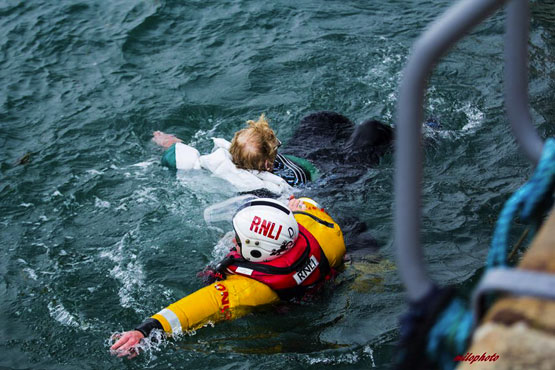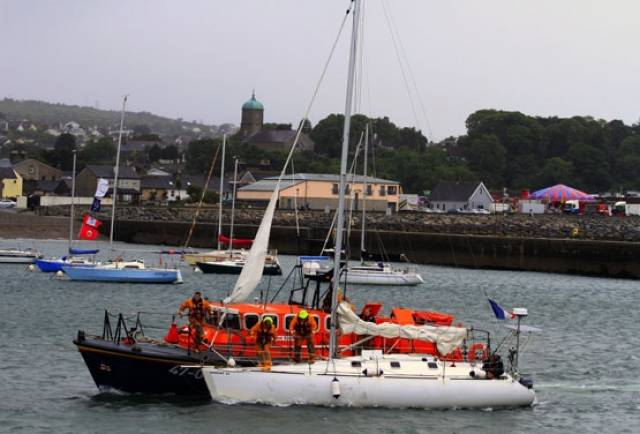#RNLI - Wicklow RNLI's all-weather lifeboat launched yesterday afternoon (Sunday 19 June) to a solo sailor in distress six miles off the Wicklow coast.
A marine VHF radio distress signal was received by the Irish Coast Guard from the French sailor on passage from France to Norway, when the twin rudder of his yacht suffered damaged and he was unable to steer the vessel.
The lifeboat was alongside the casualty 30 minutes after launch. Rescue 116, the Dublin-based coastguard helicopter was also tasked to the incident, remaining overhead while lifeboat volunteer Ciaran Doyle was transferred onto the yacht to assist the sailor with hauling an anchor and preparing a towline.
Weather conditions at the time had a rough sea state with a southerly Force 5-6 wind and good visibility.
With a towline established, the 10m yacht was taken back to Wicklow Harbour. Due to the conditions at the time, the journey took over 90 minutes as the line parted on three occasions.
The yacht was safely alongside the south quay at 5pm on Sunday evening.
Speaking after the callout, Wicklow RNLI lifeboat press officer Tommy Dover said: "Our coxswain Nick Keogh displayed great boat handling skills this afternoon in challenging conditions, while safely transferring a crewmember onto the yacht to assist the lone sailor."
This was the second callout over the weekend. On Saturday morning (18 June), during the Round Ireland Yacht Race, Wicklow RNLI helm Vinnie Mulvihill was busy preparing the inshore lifeboat for exercise when he heard shouts that someone was in the water near the East Pier.
Quick-thinking Mulvihill left the boat and entered the water to assist the woman after she slipped and fell in while going ashore from a moored boat.

Woman rescued by Wicklow RNLI after she slipped into the harbour (Photo: RNLI/Milo Vanbeck)
He brought the women alongside a nearby boat and with the help of the occupants, she was taken out of the water and assessed at the lifeboat station by first aider Carol Flahive.
No further medical assistance was required and the woman left the station none the worse from her ordeal after a cup of tea and changing into dry clothes.































































